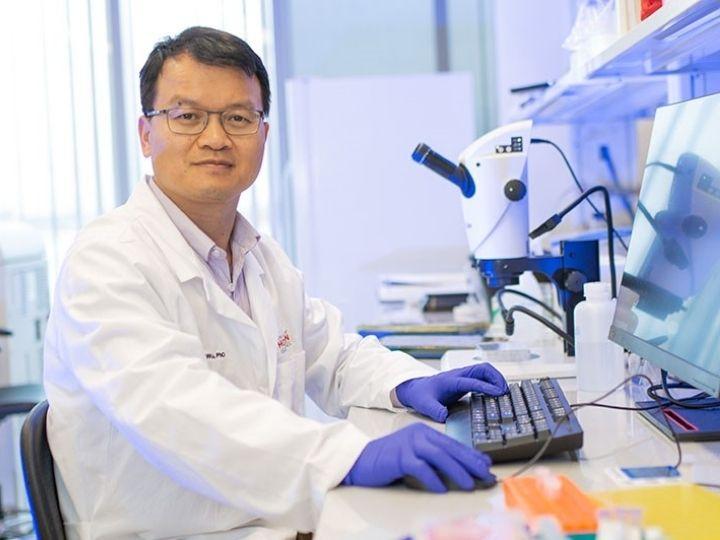University of Houston researcher awarded $2.5M to study “spongy heart”

Credit: University of Houston
University of Houston pharmacologist Mingfu Wu has been awarded $2.5 million from the National Heart, Lung, and Blood Institute to explore the cause of and therapeutic treatment for left ventricular non-compaction cardiomyopathy (LVNC). One type of LVNC originates when the heart is forming in utero and occurs when pieces of ridge-like heart muscle, called trabeculae, fail to compact or become solid.
Markings of LVNC include pronounced trabeculae, deep recesses and a spongy-like texture, thus the disease is often referred to as a “spongy heart.” With progressive symptoms, patients will display heart failure, arrhythmias and embolic events and the mortality of patients with LVNC is about 47%.
“Although many studies show that lack of trabeculation causes embryonic demise, and excess trabeculation causes LVNC, the mechanisms underlying the diseases are still not fully known. Studies from my lab demonstrated that cell orientation and direction contribute to trabecular initiation by forming a multiple layer myocardium,” said Wu, associate professor of pharmacology, who seeks to determine exactly how the trabeculae form and how they fuse to the heart wall.
That’s step one. Step two will be developing the medicines.
“We are trying to explore medicines to reduce the symptoms or recover from the disease. We will also try to determine at what stage to appropriately administer the medications to resolve the defects,” said Wu.
Preliminary data from the Wu lab clearly establishes important roles of certain genes (encoding integrins) in heart development; however, the underlying molecular and cellular mechanisms remain elusive.
“Our central hypothesis is that integrins have distinct functions in cardiac morphogenesis with some regulating trabecular formation and growth, and some regulating ventricular contraction and the subsequent compaction,” said Wu.
Genetic inheritance of LVNC occurs in at least 30-50% of patients.
###
Media Contact
Laurie Fickman
[email protected]




